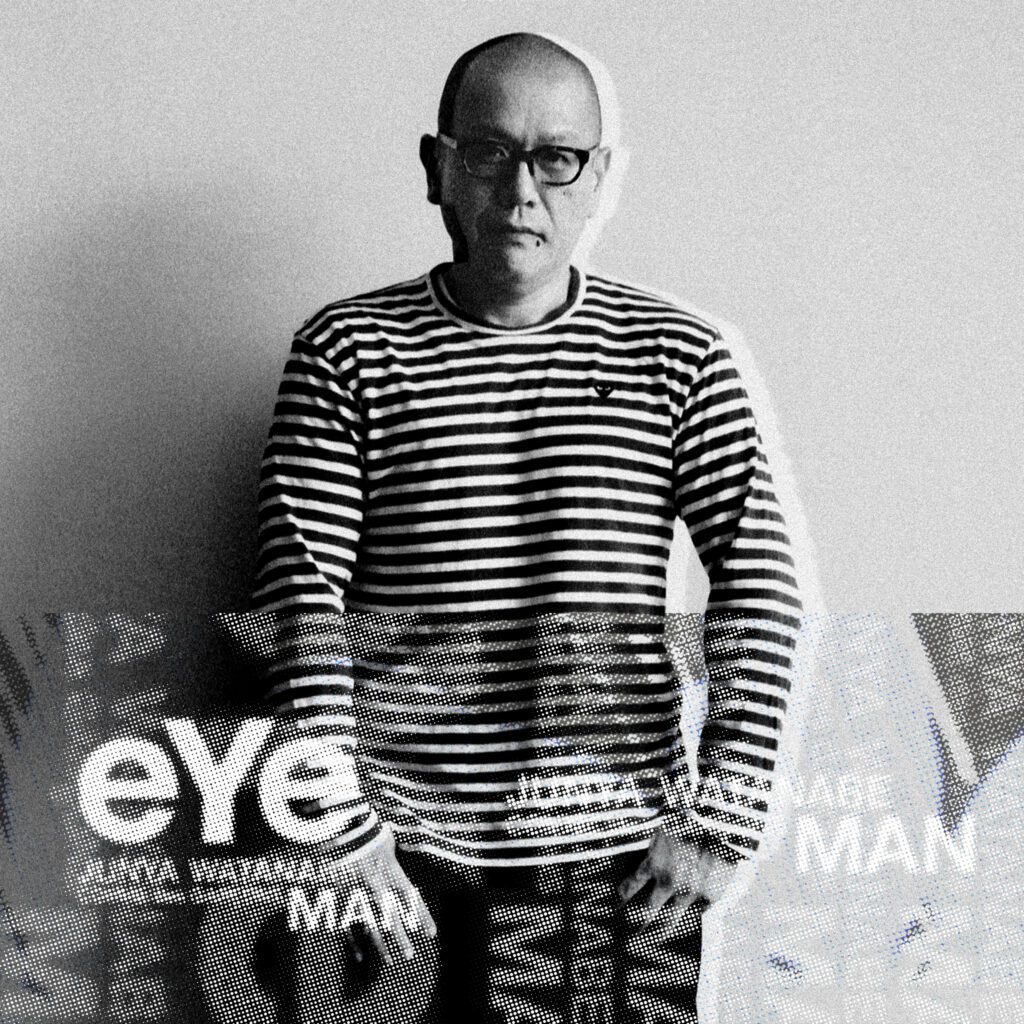
“I also like to start with an existing piece, deconstruct it and rebuild it to create a new cut or even a totally different product.”
Junya Watanabe
BIRTH OF AN ICON IN THE HOUSE COMME DES GARÇONS
Japanese artist born in Fukushima in 1961, Junya Watanabe graduated from the prestigious Bunka Fashion College in Tokyo and in 1984 joined Rei Kawakubo, founder of COMME des GARÇONS and mentor of the young designer. He started out as a designer. In 1987, he joined the management of the COMME des GARÇONS knitwear branch.
In 1992, his first line was launched under his name. The same year, he presented his first show in the hall of the Ryogoku station in Tokyo, and the following year marked his first Junya Watanabe ready-to-wear women’s show in Paris. The success, almost immediate pushes him to create a men’s line in the early 2000s: Junya Watanabe Man. This brand, still under the umbrella of COMME des GARCONS, is simple but functional and elegant. A meticulous work that allows to create time-proof pieces, which will become references over the decades. The brand also bears the name eYe Junya Watanabe Man.
MONOZUKURI, OR THE ART OF MAKING BY JUNYA WATANABE
Junya Watanabe is known for his avant-garde style; in particular, his exploration of new cutting concepts, ingenious fabric sourcing and innovative draping techniques. Like his spring 2000 show for Junya Watanabe – Comme des Garçons, which was based on reversible waterproof garments, set off by a wall of water (artificial rain) in the middle of the catwalk. In this same idea of defying the weather, we also find more recently a collaboration between eYe COMME des GARCONS Junya Watanabe & Gore-Tex Parka.
Avant-garde and futuristic, his work is based on experimentation, restructuring and reconstruction games. The designer’s flagship silhouettes are characterized by their complexity. An ability to transform the ordinary into the extraordinary. Junya Watanabe is considered the pioneer of techno-couture, an experimental fashion where synthetic materials, technological innovations and traditional textile know-how meet. This affection for the traditional is often found through recurring collaborations with Levi’s or Carhartt. We have already seen the Japanese designer collaborate with New Balance, offering original creations on the 2002R, 550 or 990. In 2022, he offers us an update of the 574 in 3 emblematic colors, hence the name “574 Legacy”.
Beyond being a renowned designer, Junya Watanabe remains fundamentally diligent about following the rules of fashion. In his rare interviews, he talks about some of his inspirations, including stalwarts Pierre Cardin and Issey Miyake, with whom he shares a love of geometry but also of experimentation. He also talks about his mother’s store associated with traditional skills and craftsmanship. His pieces have often been described as technical feats via specific cuts, or collections based on a simple material. We note that he collaborates with traditional houses that have proven themselves and become technical and aesthetic icons. An example is the 2001 collection centered on Levi’s fabric, which elevated denim to the rank of haute couture.
INNOVATION, THE MAIN THEME OF HIS WORK
The Fall-Winter 22-23 Women’s collection is based around 3 strong words: “riders”, “flight jackets” and “cool check jackets”. We find the very essence of Watanabe around the layering of materials with among others leather, tweed, restructuring of iconic pieces, but above all elegance: the revisiting of the classic in all its splendor. For men, the play of materials, but especially colors with the use of sarape, a fabric based on multicolored wool that is found on the traditional outfits of some cultures in South America. He adds fringed borders, emphasizing the folkloric aspect of this collection. In this recent collaboration with Jay Kay -the British artist leader of the band Jamiroquai- he takes on a much more casual theme representing all indigenous cultures while keeping his technical style. Brief collaborations with Carhartt and Levi’s are also present. To mark this collaboration with the artist, a short film of the fashion show is available on the platforms, using the scenographic and aesthetic codes of the clip “Virtual Insanity”, a reference to the 90s, the period in which the group had its biggest success.
OUR SELECTION JUNYA WATANABE MAN
Since 2015, there has been a Junya Watanabe Man selection within Graduate, offering products from his classic, subtle and perfectly executed collection. We find
We also find within this ss23 collection, more worked pieces such as shirts which, under a formal appearance, reveal the twists that Junya Watanabe has the secret. We find a whole work around a piece of collection of the vintage store BerBerjin, namely a denim levis of the first half of the twentieth century. The jeans were entirely scanned in the state and printed on a light cotton canvas. Original process, like the works of the Japanese designer, the result is surprising. We find traces of wear, shades of indigo due to fading and the passage of time. A remarkable work made in Japan. Masterpieces, the shorts and coat from a capsule dedicated to the work of Jean-Michel Basquiat.
Junya Watanabe subtly underlines the vision that Graduate puts forward, namely the redefinition of the idea of luxury living. Our mantra is quality and understanding of customer expectations.
(In other words, we love Watanabe!)
Find out more about Comme des Garçons here:
